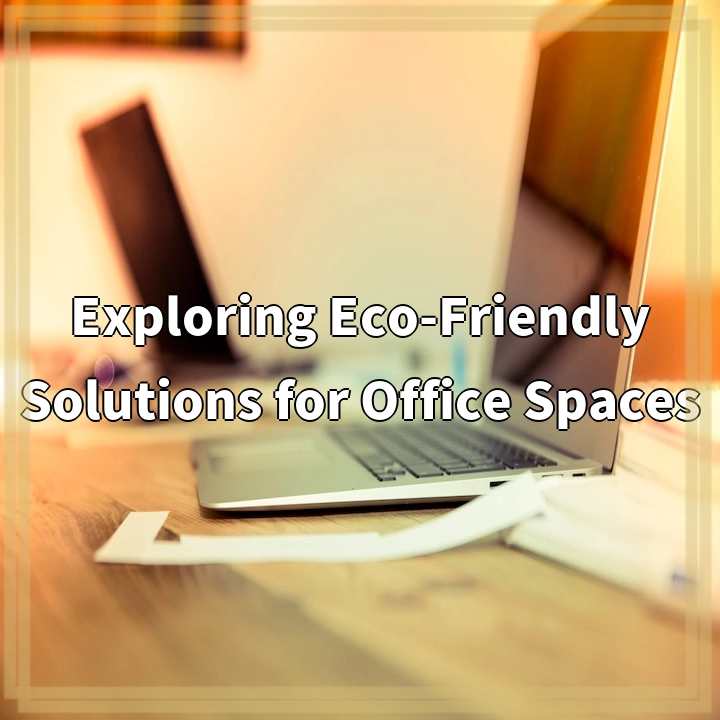
What it is:
Exploring Eco-Friendly Solutions for Office Spaces
In recent years, there has been a growing awareness and concern for the environmental impacts of office spaces. As companies aim to reduce their carbon footprint and operate more sustainably, there is a need to explore eco-friendly solutions for office spaces. These solutions focus on minimizing resource consumption, reducing waste generation, and promoting a healthier and greener work environment.
Real-World Problems:
Despite the increasing demand for eco-friendly office spaces, there are several real-world problems that hinder their widespread adoption. It is important to identify and understand these problems to find effective solutions and drive positive change.
1. Limited Awareness:
One of the main challenges is the lack of awareness among office owners and managers regarding the environmental impact of their spaces. Many are unaware of the potential benefits and cost savings associated with eco-friendly practices. Educating and raising awareness about these solutions is crucial to drive adoption.
2. Cost Barriers:
Implementing eco-friendly solutions often requires upfront investments. While they may result in long-term cost savings, the initial expenses can be a deterrent for some companies, especially small and medium-sized businesses with limited budgets. Finding cost-effective alternatives and highlighting the financial benefits can help overcome this barrier.
3. Integration Challenges:
Integrating eco-friendly solutions into existing office spaces can be challenging. Retrofitting older buildings with energy-efficient technologies and improving waste management systems may require significant modifications and disruptions. Overcoming these integration challenges requires careful planning, coordination, and collaboration with building owners, tenants, and contractors.
4. Behavior Change:
Changing the behavior and habits of employees is another significant obstacle. Encouraging individuals to adopt sustainable practices, such as reducing paper usage, recycling, and conserving energy, can be met with resistance or indifference. Providing incentives, offering training programs, and fostering a culture of environmental responsibility can help drive behavior change.
5. Limited Infrastructure:
In some areas, the lack of infrastructure, such as recycling facilities or access to renewable energy sources, can pose challenges for implementing eco-friendly solutions in office spaces. Addressing these infrastructure gaps will require collaboration between governments, businesses, and communities to create sustainable infrastructure that supports eco-friendly practices.

Solutions for Eco-Friendly Office Spaces:
1. Education and Awareness:
Increasing awareness among office owners and managers about the environmental impact of their spaces is essential. Providing educational resources and highlighting the benefits and cost savings associated with eco-friendly practices can encourage adoption.
2. Cost-Effective Alternatives:
Addressing the cost barriers by identifying and promoting cost-effective alternatives to traditional office practices is crucial. Demonstrating the long-term financial benefits of eco-friendly solutions can help overcome upfront investment concerns.
3. Strategic Integration:
Tackling integration challenges by planning and coordinating the implementation of eco-friendly solutions in office spaces. This includes retrofitting older buildings with energy-efficient technologies and improving waste management systems.
4. Behavior Change Initiatives:
Promoting sustainable behaviors among employees through incentives, training programs, and fostering a culture of environmental responsibility. Encouraging individuals to reduce paper usage, recycle, and conserve energy can contribute to creating eco-friendly office spaces.
5. Infrastructure Development:
Collaborating between governments, businesses, and communities to develop sustainable infrastructure that supports eco-friendly practices in office spaces. This includes investing in recycling facilities, renewable energy sources, and efficient transportation systems.















